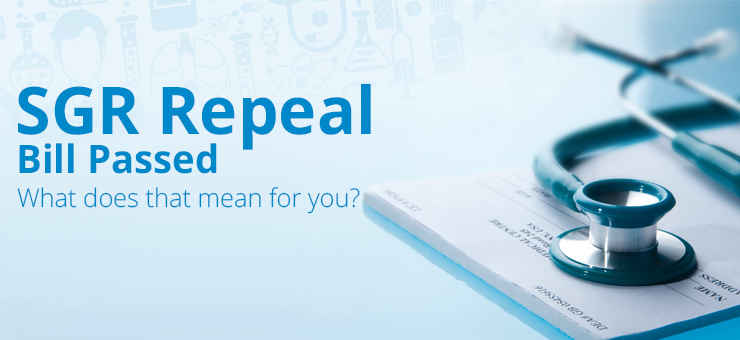What a happy month April has been.
First, CMS announced the simplification of the Meaningful Use program, and then, after 18 years of haggling over it, both Senate and Congress passed the SGR repeal Bill (signed into law by Obama yesterday).
If you have been living under a rock and don’t know what the bill is about, let me give you a brief overview.
In the late 1990s, in a bid to curtail healthcare spending, Medicare reimbursements were linked to increase in gross domestic product through the SGR formula. This much-maligned formula would eventually result in annual payment cuts for physicians.
As expected, right from the start, the physician community was in an uproar. The fear that physicians might stop taking Medicare patients altogether became very real, which prompted congress to stave off these payment cuts with a series of payment “patches”, the most recent being in 2014. The SGR repeal bill puts an end to this arrangement once and for all
What does this mean for you?
The good news
- With the elimination of this formula, a much better payment equation has been implemented, which will not only put an end to payment reductions, but will actually increase payments annually by 0.5 percent starting on July 1 and lasting through 2019.
- The new legislation not only eliminates the annual 21 percent Medicare payment cut, that has hung over doctors’ heads since 1997, but also makes value-based reimbursement the new model for Medicare reimbursement. The move to value-based reimbursement means that it’s vital for your practice to understand and comply with CMS quality programs, including PQRSand the Value-Based Modifier program.
The not so good news?
Unlike last year, there was no language regarding ICD-10 implementation delays in this latest version of the SGR bill. Thus, the transition to ICD-10 on October 1 is now almost certain. You must start making serious preparations.
Check out our Road to ICD-10 series for valuable insights on how to prepare your practice with less than 6 months to ICD-10.

Reader Interactions